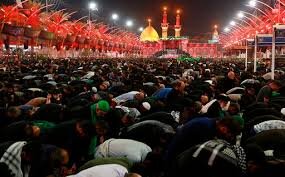Hawzah News Agency - Millions of people from around the world travel to Iraq each year to partake in the annual Arba'een processions, which over the past years have grown into the largest human gathering of any kind.
The decades-old event marks the 40th day after the anniversary of the martyrdom of Imam Hussein and 72 of his companions in the Battle of Karbala, in southern Iraq, in 680 AD after fighting courageously for justice against the much larger army of the Umayyad caliph, Yazid I.
Each year, to mourn their third Imam, Muslims set off on a symbolic 80-kilometer walk that begins from Najaf, where his father Imam Ali is buried, to the holy city of Karbala, where Imam Hussein's holy shrine is located.
Accommodating the pilgrims along the road, as well as in both Najaf and Karbala, are thousands of make-shift tents, also known as mawkibs, that provide a wide range of services from food to medical care and massages -- all free of charge.
The event has over the past few years attracted global attention following the emergence of the Daesh terrorist group, which sought to raze all historically and religiously significant sites in Iraq and Syria under the influence of their Takfiri-Wahhabist ideology.
Despite the global attention that it has received and its sheer size, however, most Western media adamantly give the Arba'een gathering as little coverage as possible. Compare this with the wide coverage they give to rare scenes of flagellation by a tiny number of individuals during Ashura - a practice strictly prohibited and admonished by top religious figures.

